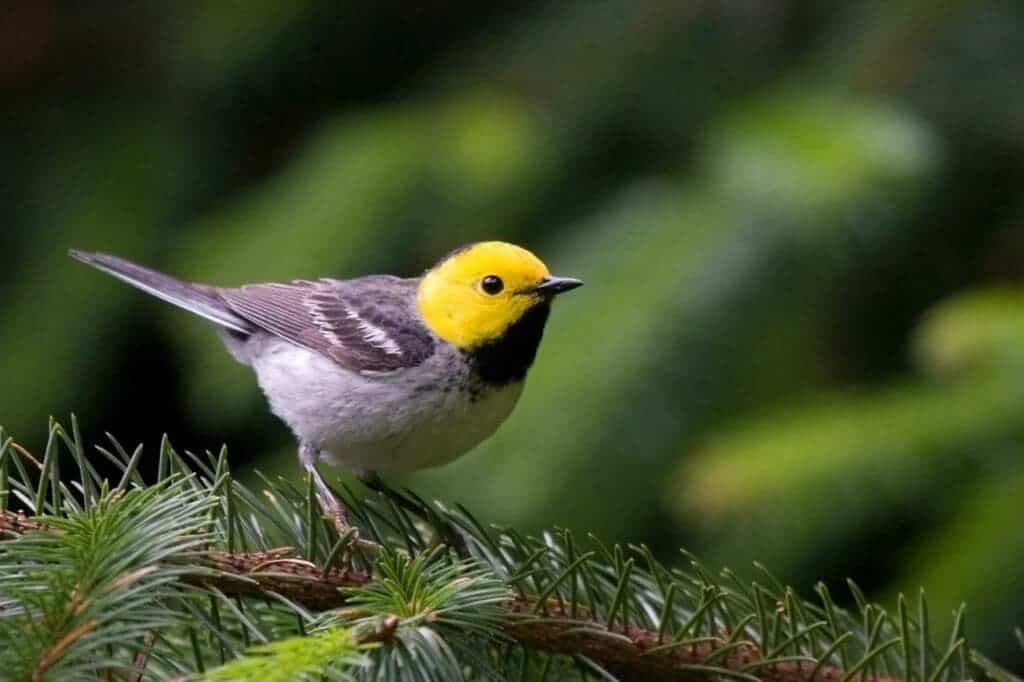Wildfires seem to alter the songs of birds living in affected forests, a new paper suggests.
The study focused on Hermit Warblers, a small songbird native to North and Central America. These birds woo their mates with songs following formulas and patterns, unlike the ones they use to defend territory — these are more complex and creative. Oftentimes, there is a song formula that becomes dominant within certain populations or geographic areas.

Image via Wikimedia.
Researchers recorded over a thousand of their songs in California from 2009 to 2014. They report finding over 35 regional dialects in song formulas, and that wildfires and other disturbances have a significant effect on the way these birds sing their songs in the short term by mixing populations together.
Environmental artists
“Our surveys suggest that song dialects arose in sub-populations specialized to different forest types,” said the paper’s lead author, Brett Furnas. “Over the longer term, fire caused some birds to flee and created a vacuum for other birds to fill. The net result is that some areas now have birds singing more than one dialect resulting in a complex diversity of songs throughout California.”
The species is immediately — and negatively — impacted by disturbances such as wildfires or elective timber harvests, according to the authors. However, they do ultimately fare well under the effects of such events, due to changes in forest structure and an increased influx of pollinating insects (food).
The authors proposed that birdsong can help us understand how biodiversity is maintained in certain environments. These birds learn songs through imitation, and with time this creates song variants that are characteristic of individual areas.
The study recorded the formulaic songs from 1,588 males across 101 study sites in the state between 2009 and 2014, providing the first comprehensive mapping of Hermit Warbler songs throughout California. Each song fit one of 35 dialects.
Song dialects tended to be isolated to different forest types. Local song diversity, meanwhile, increased with the amount of local fires. Using data from ten study areas revisited in 2019, the researchers also showed that song structure had begun to change since the initial visits 5-10 years earlier, with locations that saw wildfires between visits showing the greatest increase in diversity.
The paper, “Wildfires and Mass Effects of Dispersal Disrupt the Local Uniformity of Type I Songs of Hermit Warblers in California,” has been published in the journal The Auk: Ornithological Advances.






